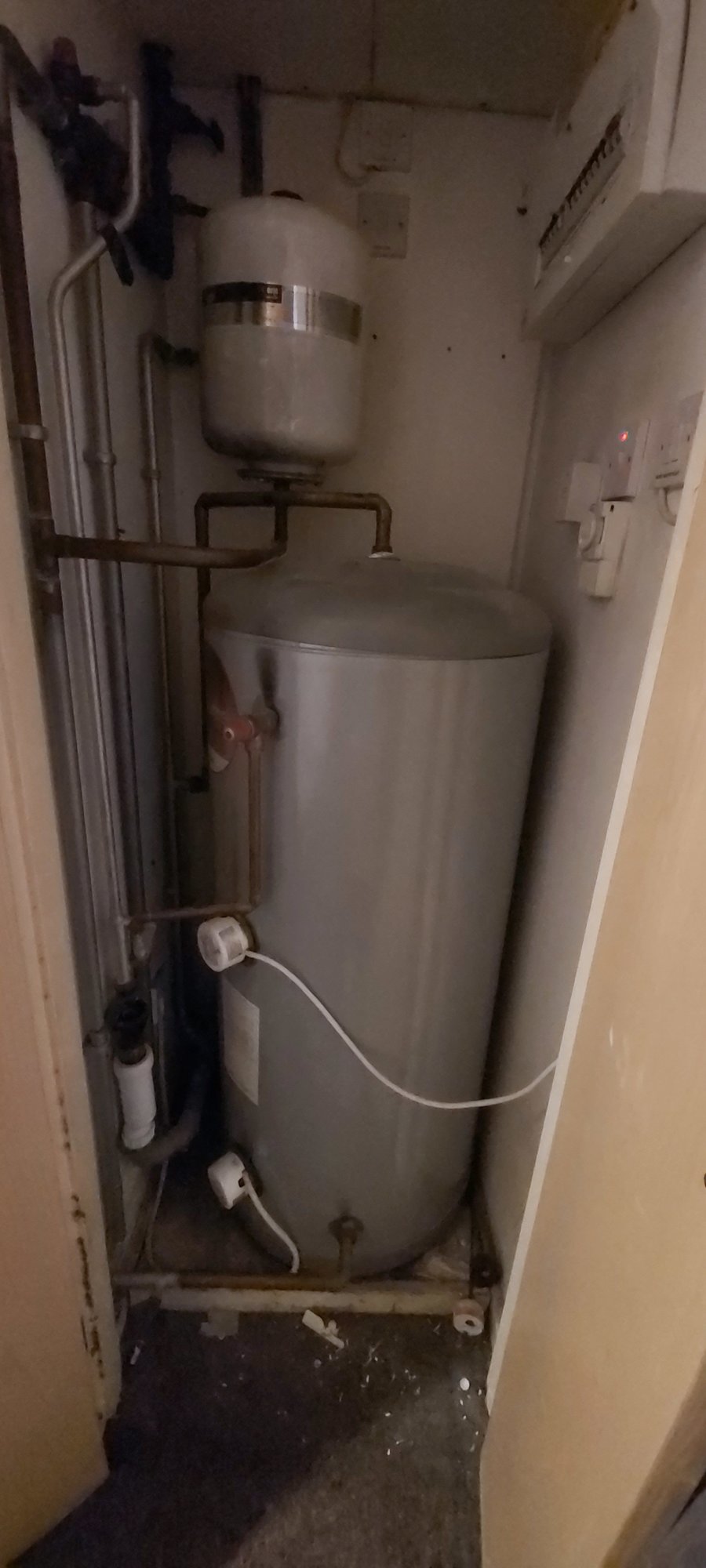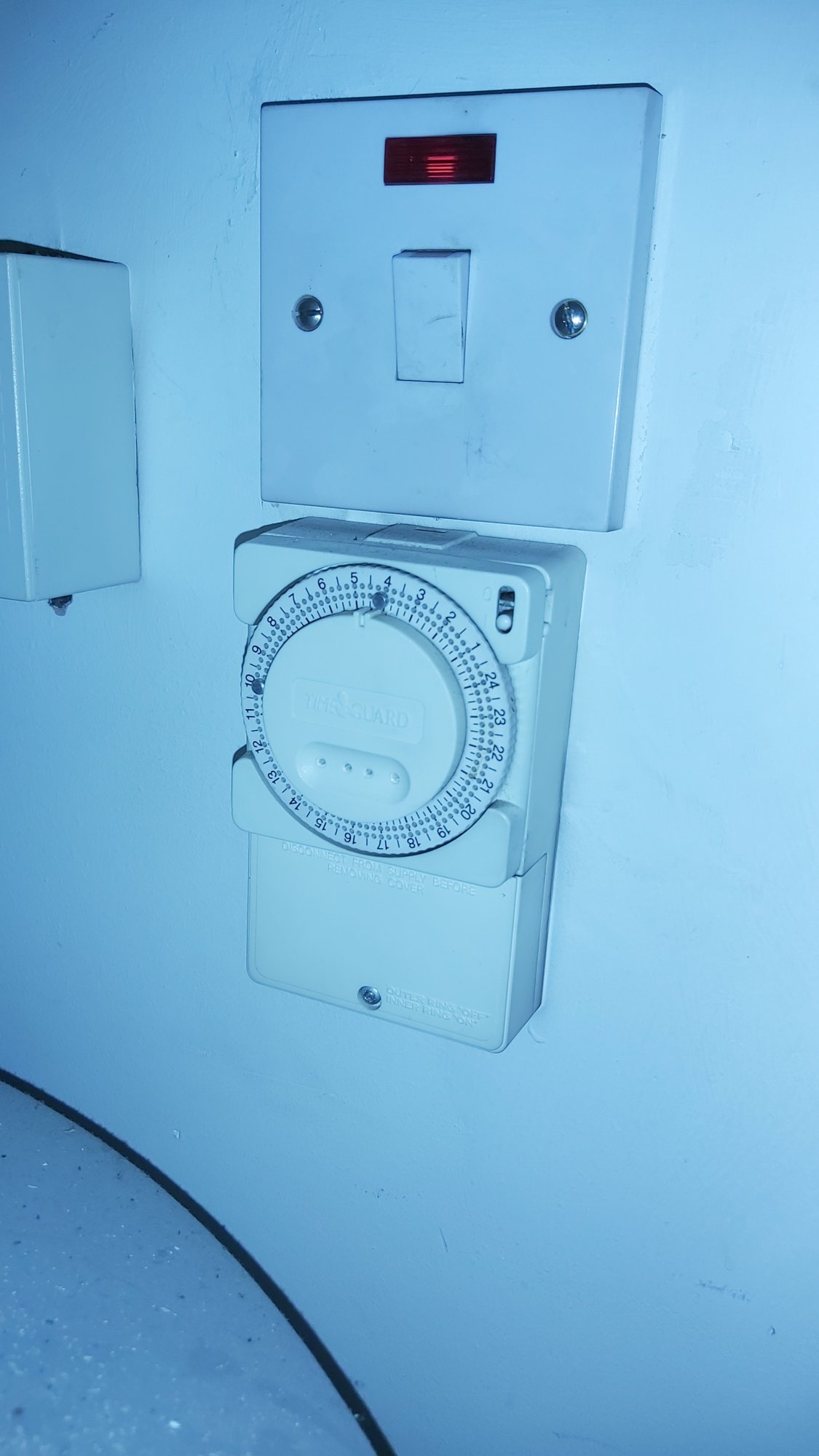Hi everyone, hoping someone can help.
I've lived in the same rented flat now for a years, with no real issues with the hot water/heating etc. We've only got electricity, no gas. The heating is under floor heating, but we switch it on because the flat is generally quite warm. The hot water is heated via a large CYLINDER in the airing cupboard in my room - see pic below.
At the end of December, the hot water stopped working. It just didn't seem to be heating up properly, only getting sort of tepid, rather than actually getting hot. At one point, while trying to figure out what was going on, I switched this switch on, but nothing happened. The switch is in the cupboard, next to the CYLINDER -
Anyway, after several days of no hot water, and our lettings agent being unhelpful, they eventually arranged for an engineer to come out and he sorted it. He mentioned something about the thermostat, replaced a part, and the water went back to being nice and hot again.
Fast forward to now and we've just had our electricity bill for January and it's quite a lot higher than normal (I do a meter reading every month). It occurred to me that the "boost" switch had been switched on all month, so I switched it off last night. This morning, I went to take a shower and the water was back to being tepid again. So, I switched the "boost" switch back on and now the water seems to be heating up. Am I right in thinking that there must still be something wrong with the system if the water's only heating up when this switch is on?
I've lived in the same rented flat now for a years, with no real issues with the hot water/heating etc. We've only got electricity, no gas. The heating is under floor heating, but we switch it on because the flat is generally quite warm. The hot water is heated via a large CYLINDER in the airing cupboard in my room - see pic below.
At the end of December, the hot water stopped working. It just didn't seem to be heating up properly, only getting sort of tepid, rather than actually getting hot. At one point, while trying to figure out what was going on, I switched this switch on, but nothing happened. The switch is in the cupboard, next to the CYLINDER -
Anyway, after several days of no hot water, and our lettings agent being unhelpful, they eventually arranged for an engineer to come out and he sorted it. He mentioned something about the thermostat, replaced a part, and the water went back to being nice and hot again.
Fast forward to now and we've just had our electricity bill for January and it's quite a lot higher than normal (I do a meter reading every month). It occurred to me that the "boost" switch had been switched on all month, so I switched it off last night. This morning, I went to take a shower and the water was back to being tepid again. So, I switched the "boost" switch back on and now the water seems to be heating up. Am I right in thinking that there must still be something wrong with the system if the water's only heating up when this switch is on?
Last edited by a moderator:






